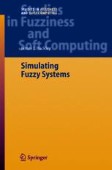Search
Search Results
-
Optimizing a Production Line
The simple production line considered in this chapter is shown in Fig. 20.1. This problem has been adapted from an example in [1]. This situation is...
-
Queuing I: One-Step Calculations
In this chapter we show situations where simulation can produce the same results as fuzzy calculations which employ the extension principle. We argue...
-
Simulation Programs
In this chapter we present some of the GPSS programs used in Chaps. 9–26. We had to omit many programs in order to keep this chapter. less that 20...
-
Summary and Conclusions
The first objective of this book is to explain how many systems naturally become fuzzy systems. The second objective is to show how regular (crisp)...
-
Machine Shop I
The queuing system in this chapter is shown in Fig. 11.1. This application was adopted from a problem in ([1], p.594). We continue this problem in...
-
Inventory Control II
This chapter continues the inventory control problem studied in the previous chapter. The new system is shown in Fig. 17.1. We have added two things...
-
Project Network Model
The project network diagram is in Fig. 26.1. This problem is modelled after an example in [2]. The project consists of various jobs that must be...
-
Queuing II: No One-Step Calculations
In this chapter we will study the fuzzy system shown in Fig. 5.1 now reproduced as Fig. 9.1. This example was adapted from an example in [1]. The...
-
Human Recognition using Face, Fingerprint and Voice
We describe in this chapter a new approach for human recognition using as information the face, fingerprint, and voice of a person. We have described...
-

-

-

-
Priority Queues
This chapter will use the queuing system in Chaps. 5 and 9, but with priority orders. The system is shown in Fig. 19.1. Everything is the same as in...
-
Fuzzy Probability Theory
In this chapter we look more closely at the fuzzy binomial distribution, the fuzzy Poisson, and at the fuzzy normal,exponential and uniform...
-
Simulation
Now we come to the point were we need to select simulation software to do all the crisp simulations staring in Chap. 7. The author is not an expert...
-
Fuzzy Estimation
sThe first thing to do is explain how we will get fuzzy numbers, and fuzzy probabilities, from a set of confidence intervals which will be...
-
Simulation Optimization
In this chapter we discuss how we plan to solve the optimization problems attached to the simulation as expressed in (5-4)-(5-5) in Chap. 5, or...
-
Voice Recognition with Neural Networks, Fuzzy Logic and Genetic Algorithms
We describe in this chapter the use of neural networks, fuzzy logic and genetic algorithms for voice recognition. In particular, we consider the case...
-
Evolution of the Internet Topology and Traffic Dynamics of Data Packets
In recent years, the Internet has become one of the most influential media in our daily life, going beyond in its role as the basic infrastructure in...
-
From Classical Connectionist Models to Probabilistic/Generalised Regression Neural Networks (PNNs/GRNNs)
This chapter begins by briefly summarising some of the well-known classical connectionist/artificial neural network models such as multi-layered...
